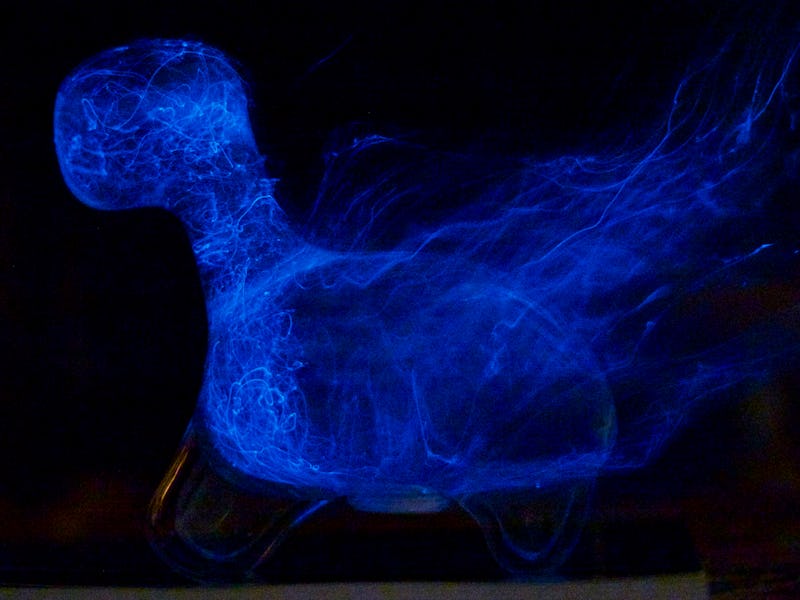These Microscopic Creatures Make Shockingly Great First Pets, Just Add Water
Move over, teacup pig.

Tiny pets are trendy, but there’s a limit to how small you can breed a horse, dog, or pig. If you want to stay ahead of the curve, you need to think smaller — way smaller. Microscopic pets are the best because you can keeps lots of them in a small space and, if you neglect them and they all die, no one is going to charge you with animal cruelty. Just have a moment of silence, flush the toilet, and start again.
If you want to stay ahead of the small-pet trend, here are a few suggestions:
Dinoflagellates
Dinoflagellates are tiny, single-celled organisms that are not plants or animals, but protists. Most live in sea water, and most have an amazing superpower: bioluminescence. When the water they’re in is disturbed, dinoflagellates produce light, causing the water to glow a bluish green.
A California company will sell you a tiny dinosaur-shaped aquarium full of the little guys to impress your friends and keep by your bedside at night. You can also order them though some educational and scientific suppliers. Even though you won’t be able to see the individual dinoflagellates without a microscope, don’t forget that they are living things. They need to be fed, they will die if you don’t take care of them, and they even experience jet lag.
Tardigrades
Tardigrades, also known as water bears or moss piglets, are amazing little creatures. They’re best known for their ability to survive almost any environmental condition on and off this planet (yes, they’ve been sent into space).
If you want to keep a water bear as a pet, you don’t need to go out and buy one. Just find a mossy environment near where you live and collect a small, damp sample. Add water to keep the moss wet for about a day, then squeeze out some of the water onto a slide and check out the results under a microscope. Look for a weird-looking tubular thing squirming around. Did you find one? Congratulations, you successfully domesticated a tardigrade! Add moss and water every once in a while to keep your pets wet and fed.
Praying Mantis Nymphs
If you’re not yet ready for tardigrade-level tiny, you might consider hatching your own batch of mantis nymphs. They’re tiny, but not so tiny you can’t see them with your own eyes. You can buy mantis egg sacs, called ootheca, from garden supply stores and online. After a couple weeks about 200 baby insects will poke out and break free from the case. Watching the little guys hatch is pretty cool, unless you’re squeamish about tiny insects or suffer from trypophobia (who doesn’t)?
If you want to keep them around, you’re going to have to figure out how to feed them. Fruit flies will probably work. Eventually, they’ll start eating each other and you’ll have to separate them, or just let them have at it and let natural selection do its thing. Full grown, they won’t really still count as microscopic, but they still won’t be huge — depending on the species an adult will grow to between half an inch and six inches in length. Plan your terrarium and feeding schedule accordingly.
Sea Monkeys
Sea monkeys are the classic tiny pet, (ants too, I guess) but for good reason. The little creatures, which are actually tiny brine shrimp, are easy to care for, fun to watch, and really hard to kill.